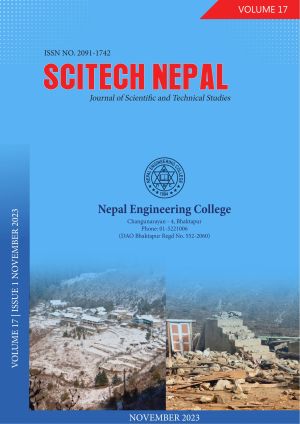A Case Study on the Effect of Geometric Design Consistency on Road Crashes on Narayanghat-Muglin Road Section
DOI:
https://doi.org/10.3126/scitech.v17i1.60469Keywords:
Design Consistency, Safety, Operating Speed, Speed Prediction Model, Accident PredictionAbstract
Design consistency is overlooked while designing roads, resulting in unsafe road facilities. The safety performance of a highway can be greatly enhanced by detecting and addressing any inconsistencies present on the road. Over time, the application of geometric standards shifted from new road construction to upgrading, which could result in limited design options. Due to the emerging importance of design consistency in geometric design, this research has been initiated to evaluate horizontal curve consistency based on an established operating speed prediction model.
Horizontal curve data of the Narayanghat–Mugling Road section has been collected from the Division Road Office, Bharatpur, and accident data has been obtained from the District Traffic Police, Chitwan. Out of 242 horizontal curves in the Narayanghat-Muglin road section, the design consistency of 223 horizontal curves was evaluated, while 19 horizontal curves with posted speed limits were not considered because these curves are not within the range of design criteria set out in Asian Highways Design Standards (1993).
The average, maximum, and minimum 85th percentile speed was found to be 78, 101, and 32 kmph respectively. Out of 223 horizontal curves evaluated for individual consistency based on operating speed, 75% of the curves were categorized as “poor”, 16% as “fair”, and 9% as “good”. It was found that under successive element consistency evaluation based on operating speed, 22% of horizontal curves were categorized as “poor”, 23% as “fair”, and 55% as “good”. When studied under vehicle stability consistency evaluation criteria, 88% of the curves were classified as “fair” and 12% as “good”. It was found that the predicted accidents caused by geometric design inconsistency and vehicle stability are 5.12% of total accidents per year.
From the safety standpoint, if the condition |V85-Vd|>20 is met, critical discrepancies between the design speed and operating speed arise, resulting in unsafe operations. Therefore, it is generally advisable to consider redesigning those road sections.




